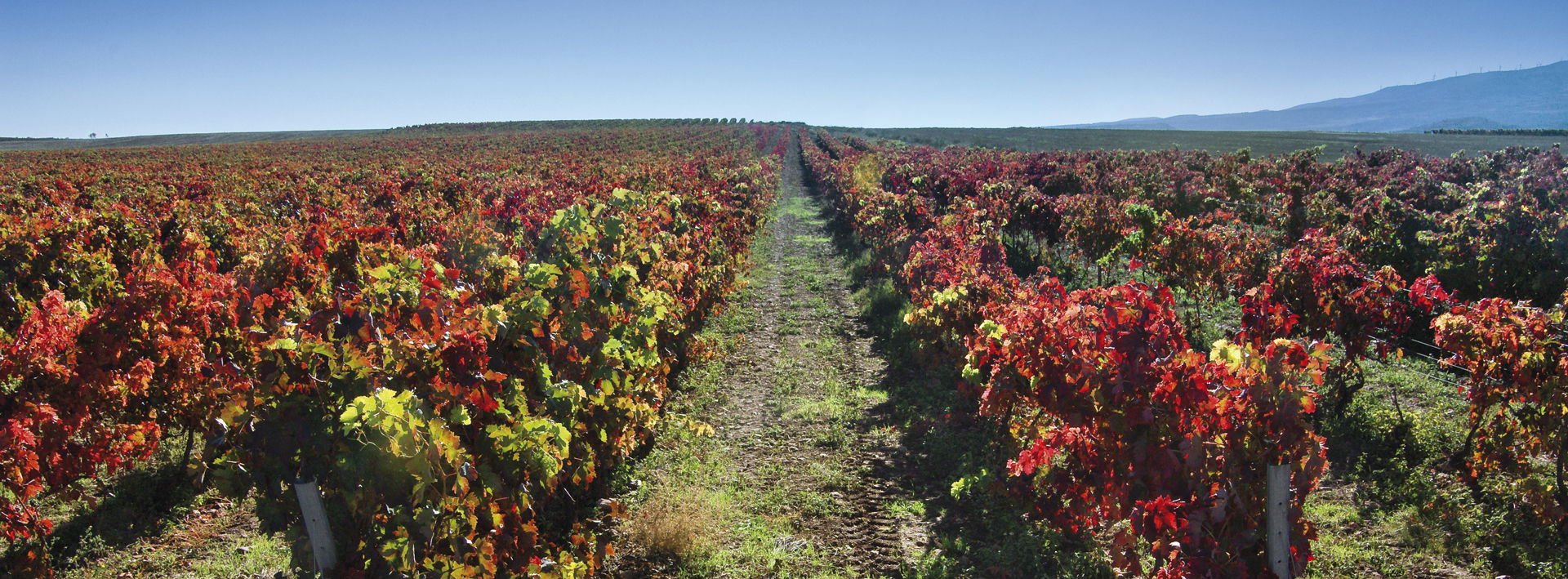Galilea is the entry point to the Ocón Valley, where vineyards have historically coexisted with almond and olive trees in the poorest soils, while the most fertile lands still produce cereal, a crop which is of vital importance to the region's economy.

“Nothing’s changed here,” explains Ramón Eguizábal, grape grower and winemaker at Nestares Eguizábal, describing the centuries-long harmonious coexistence of these three ligneous crops, although at one point the vineyard disappeared because “it was not profitable”. In fact, it was José Mari, father-in-law of Ramón and father to Marisa and María José, the current owners of the winery, who replanted the vineyard in Galilea back in 1983. “He was a grower from Fuenmayor, who married here and knew Tempranillo like the back of his hand,” says Ramón. “The poor, nitrogen-rich and extremely rustic soils, as well as the cool conditions of the area led him to think that Tempranillo grapes could be used to make long ageing wines.”
He wasn't wrong. Galilea’s strong point is its elevation meaning that in a place with such natural freshness, not a single hectare of their crops needs irrigation. The winery dates back to 1998, when José Mari, Marisa and María José's father, decided to make his own wines —he was tired of seeing that the large wineries are unable to distinguish between different qualities: "I wanted to sell bulk, but we began to work with small deposits and single plots and we started to bottle under our own brand", explains Ramón.
Lucía, a member of the new generation of the family, has now joined Nestares Eguizábal. Alongside her parents Ramón and Marisa and with the help of consultant Alberto Pedrajo they make wines with grapes selected from their 26 hectares of vineyards. Under the Segares brand, they produce a young red, an oaked-aged red, a crianza and a reserva and, in special vintages, a gran reserva. Nestares Eguizábal also produces Arzobispo Diego de Tejada, a single-vineyard gran reserva wine from La Zapatera, the first vineyard they planted in 1983 at 650 meters of elevation, and destined for long ageing. “Arzobispo 2007 is the vintage on release at this moment. We like to keep it in the cellar until it has reached the right level of finesse,” adds Ramón.
"We will make Arzobispo again in 2017; it was not made in previous vintages because the grapes did not have the quality we wanted.” Rigour and innovation are permanent features at Nestares Eguizábal: "We work in four different areas, ranging in elevation from 520 to 650 metres, with non-productive clones. In recent years we have focused on whites, particularly Sauvignon Blanc and some Chardonnay, because we believe that these soils and elevation can produce outstanding whites”.
The resulting wine, which blends the two white varieties and is aged in fine-grained, lightly toasted French oak, is called A Veredas (an expression to describe the post-war community efforts when all the neighbours worked shoulder to shoulder for the good of the village). This collection is completed with a red wine of the same name and no added sulphur. ”We don't like to call it natural wine; we prefer to say it is made with minimal intervention. We obviously use the healthiest grapes and concrete to finish it before transferring it to the barrels and then to the bottles," notes Ramón.
The family also grows its own olive trees and produces oil in the village’s olive oil press. Nestares Eguizábal exports most of its production and is a visit that we recommend. As with the whole Ocón Valley, it is largely unknown even to the inhabitants of La Rioja.


